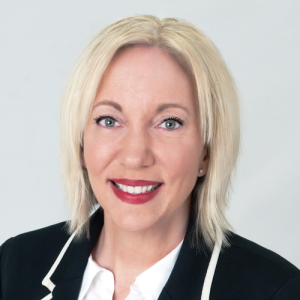
The Challenge Of Developing Cohesive IT Infrastructure
For years, Fairfield University had one internal IT group—coined CNS (computer & network services)—and one outsourced, on-campus group called administrative computing. Paige Francis, the school’s first CIO, explains that CNS was comprised of network, academic, and support services while the administrative computing group was outsourced to a vendor and supported all ERP functions, database administration, and reporting.
“Although reporting to one member of university leadership, the CFO, there was not a tremendous amount of cohesion or collaborative leadership,” Francis says. “The model was not an effective one for serving a campus’s needs. It likely would have served its purpose as a ‘stop-gap’ measure, but for long-term service to meet the needs of students, faculty, and staff, it was not a ‘continuous improvement’ environment.”
As a communications and IT expert who envisioned a cohesive IT infrastructure for Fairfield University, Francis began to explore merging these two IT teams to enable the school’s growth and evolution while streamlining services and reducing costs.
“2013 was a peak point of deciding whether Fairfield University would succeed as it pertained to technology or take the more reactive path,” Francis says. “The ultimate goal of developing a strong, unified technology presence on campus was to ensure that we could beat service expectations while assuring an innovative, responsive landscape for a rapidly changing world of technology. The University was paying an extraordinary amount of money to fuel two IT teams with good—but not great—feedback from campus.”
School Stats
Fairfield, located about an hour by train from New York City, is a Jesuit university with a commitment to preparing students for post-graduation life through strong community ties and integrated education.
71%
Out-of-state students
11:1
Student-to-faculty ratio
Notable alumni
Patricia Glassford, a current trustee and VP and CFO at GE Industrial; Christopher McCormick, president and CEO of L.L.Bean
Francis’s Solution
In order to meet the challenging aspect of merging the CNS and administrative computing teams, Francis first had to terminate the contract with the outsourcing vendor. To make this transition as easy as possible for all involved, the team actively focused on due dates of transition plans; negotiations for recruiting and attaining on-campus, outsourced staff; and the delivery of training and service assessments for each part of the ERP system.
“We needed to identify staff to fill the newly-identified internal positions,” Francis says. “These were big-ticket, high-impact positions: DBA, programmers, analysts, and system admins. We identified several individuals who were being outsourced to the vendor, making the transition much more manageable.”
Francis says one of the biggest pluses to this process was the ability to meet with both teams, identify their strengths and areas of interest, and then reconsider how a perfect structure for technology should look at Fairfield University.
“If your org chart does not morph with the pace of technology, you limit yourself, performance-wise,” Francis says. “You have to be constantly making sure your structure maps to the environment and be training your team for future transitions.”
Francis needed to create a transition plan and educate the campus accordingly. Keep in mind that, for twenty years, no Fairfield University employee ever had access to ERP development, data, or systems.
“That transition from June 30 to July 1—at the same time as a fiscal year end—moving that ‘outsourced’ at 11:59 p.m. to ‘in-house’ at 12:00 a.m., sounded terrifying,” Francis says. “But we woke up July 1 to a stable system that Fairfield University suddenly managed, unsupported.”
During the merger, Francis used the same guiding principles she’s always used: if it makes sense, it needs to happen, and it will happen successfully.
“I truly believe the success of the merge is due, in part, to the fact [that] it simply made the cogs in the wheel run smoother,” Francis says. “It’s the way the department should be structured. If the merge failed, it would be our own fault. We needed to own that.”
Merger Results
Today, the Fairfield University IT team is visible, present, and known for providing substantive, stellar service. And, the merger immediately saved the university $750,000 annually.
“We have also laid a foundation on which future technologies will undoubtedly garner us recognition for best use of technology,” Francis says. “Most recently, we have rolled out iPads to faculty in a strong, cross-campus collaboration. Information Technology Service’s (ITS) Academic Computing has spread its wings and is leading a significant charge to help facilitate engaging teaching methods in the classroom through technology use. Our network team is tackling security and wireless initiatives. And the administrative computing team is immersing themselves in the business process of a campus.”
The help desk, when not winning awards, keeps finding new ways to best serve the campus community. This led to a new need for more space, which was completed in January 2016. Desktop support, meanwhile, is covering more than ever in the classroom and office space.
“We are noticing many traditional silos gone entirely for the ITS team,” Francis says. “We have no barriers—which, just like technology, allows us to best lead, serve, and provide.”
